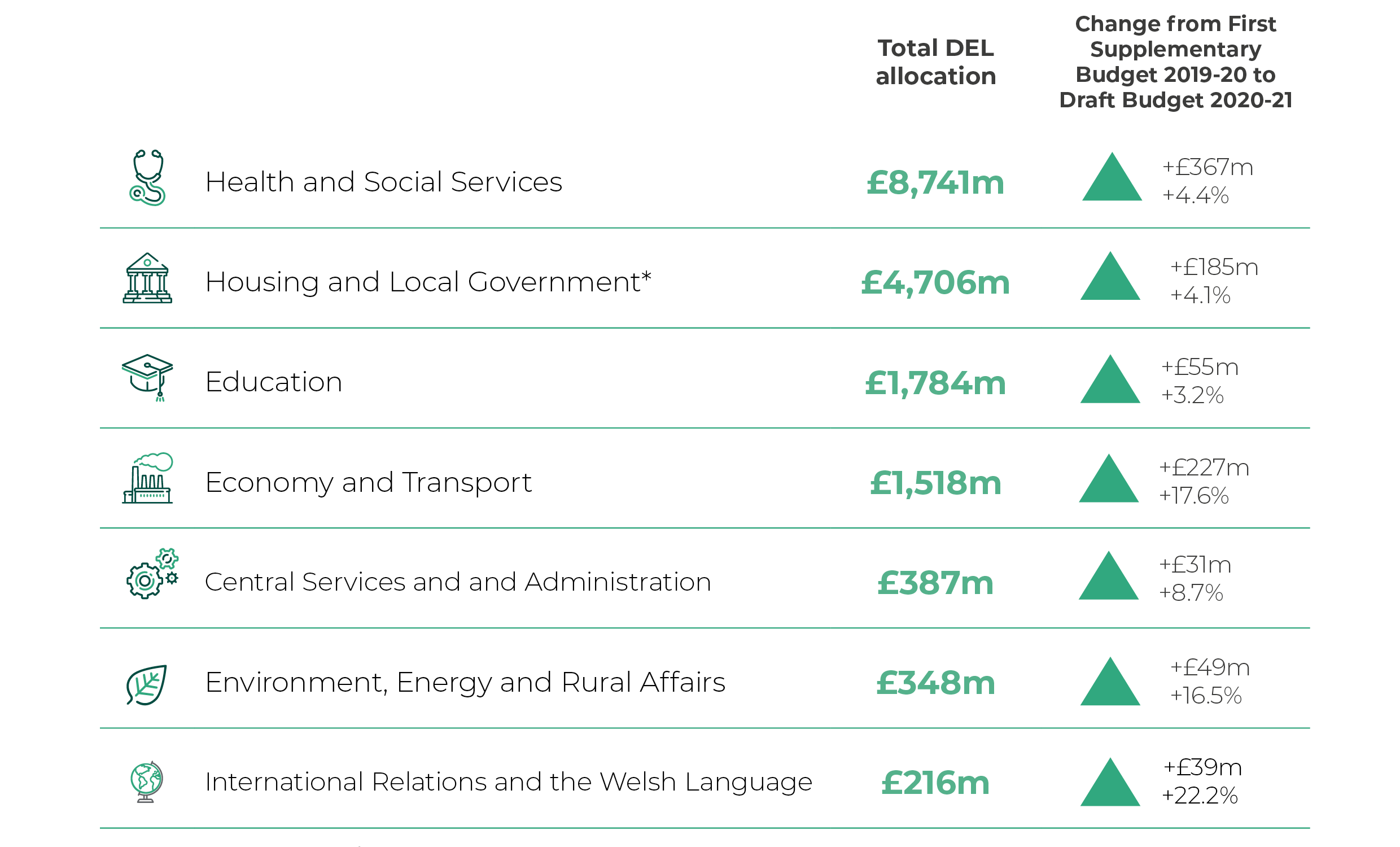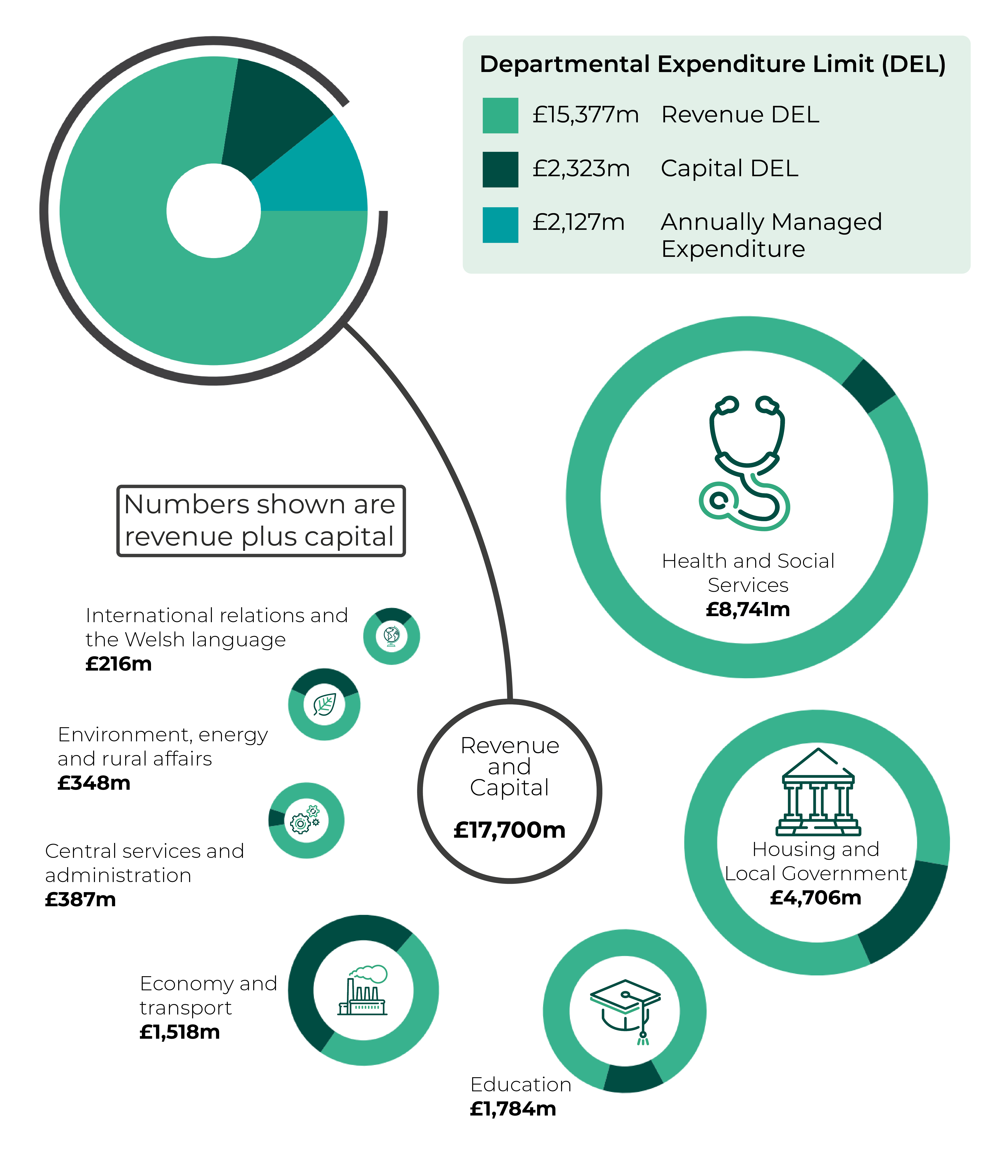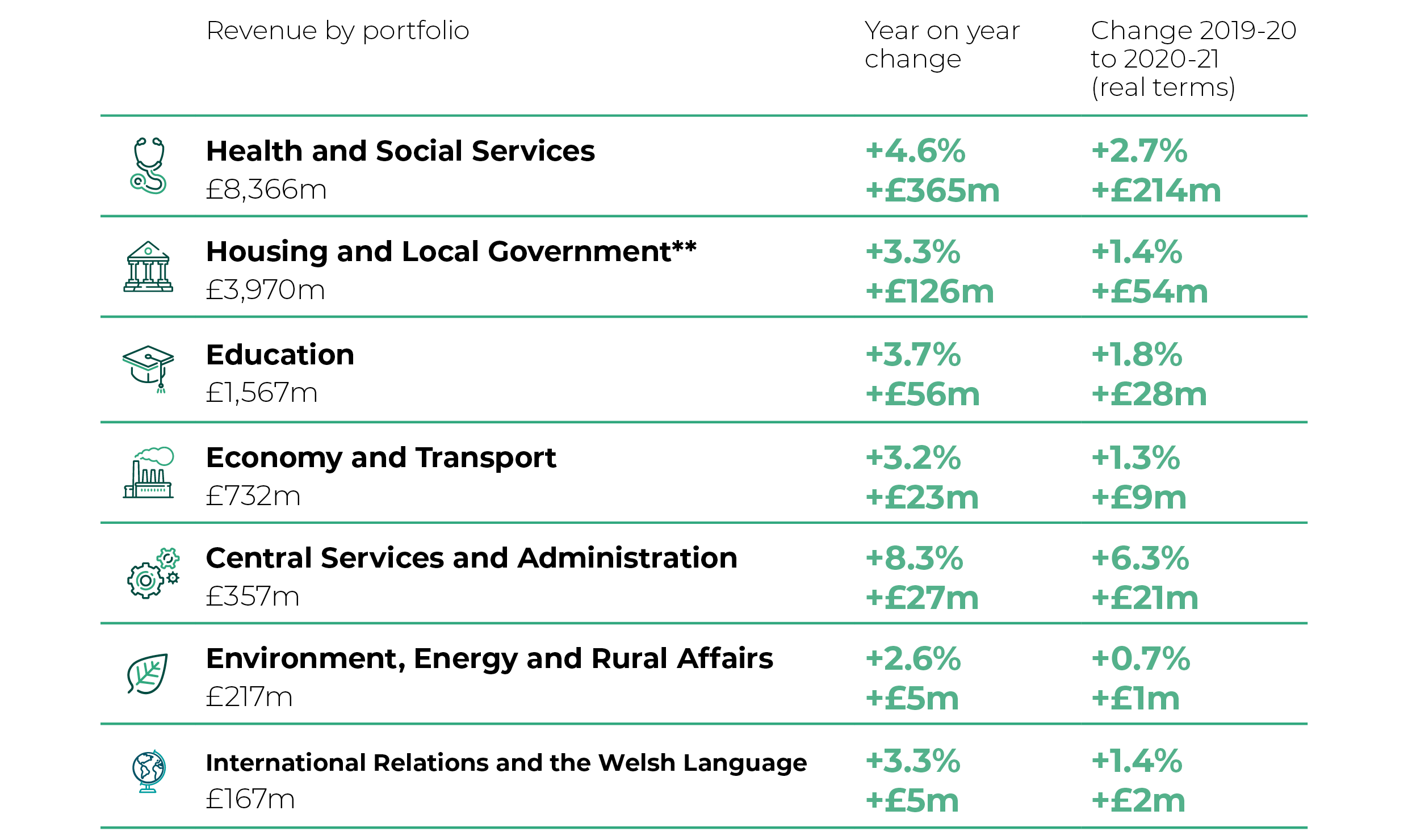Since its publication in December, Assembly committees have been scrutinising the Welsh Government’s Draft Budget 2020-21. Welsh Government received a real terms increase to the funding it has available compared to last year, which it has used to deliver a real terms increase across all budget portfolios.
This article summarises the budget in three infographics that show you how funding is due to change.
What’s included in the draft budget?
The total discretionary funding available to the Welsh Government has increased by 5.7% compared to last year. The headline figures are outlined in the below infographic:
Headline figures from the Draft Budget (DB) 2020-21 in comparison to the First Supplementary Budget (FSB) 2019-20.

 Total Managed Expenditure (TME): The total amount that the Government has to spend.
Total Managed Expenditure (TME): The total amount that the Government has to spend.
Departmental Expenditure Limit (DEL): This is the discretionary element of the budget, where the Government is allocated to, and spent by Government departments.
Annually Managed Expenditure (AME): Non-discretionary. Spent on demand-led programmes such as the issue of student loans.
* Excludes £1.1bn non-domestic rates income.
Which portfolio receives the largest budget allocation?
The Health and Social Services portfolio continues to receive the largest budget allocation. The infographic below illustrates the scale of allocations to each portfolio.

How have the budget revenue allocations changed?
Revenue allocations consist of day to day running costs such as staff pay and the purchase of consumable goods and services, all portfolios are set to receive a real terms increase next year. The infographic below shows annual changes in revenue in the draft budget 2020-21:
Changes between the Revenue* Departmental Expenditure Limits in the draft budget 2020-21 from the First Supplementary Budget 2019-20.

 * Revenue includes day to day running costs such as wages.
* Revenue includes day to day running costs such as wages.
**Excludes £1.1bn non-domestic rates income.
Figures are rounded. Please refer to the Welsh Government Draft Budget 2020-21 for exact figures.
What are the headlines from the budget?
This is the first budget since the Welsh Government declared a climate emergency in April 2019. A primary concern for the Finance Committee was the approach the budget took to addressing this issue. The budget allocated around £140m of capital investment to support the decarbonisation agenda. Ultimately, the Committee was disappointed that the budget did not demonstrate a more radical approach in this regard. The Chair of the Finance Committee acknowledged that:
In declaring a climate emergency the Welsh Government is taking steps towards addressing the issue of climate change and its impact on the world.
However, he went on to suggest that more could have been done on the issue:
…this committee feels the Welsh Government could and should have gone further to recognise the effects its own decisions and priorities are having on our climate.
The Finance Committee’s report on the draft budget builds on this, stating that it is ‘not convinced that the Welsh Government has a clear understanding of the carbon impact of its spending decisions’.
Within the budget, local authorities are provisionally set to receive increases of between 3.0% and 5.4%. However, evidence suggested that future investment in priority services such as health and social care will not be possible without higher borrowing or increases in taxation.
What next?
The Finance Committee published its report scrutiny of the Welsh Government’s Draft Budget 2020-21 last week and makes 27 recommendations.
The budget will be debated in plenary on 4 February 2020, you can watch it live on SeneddTV.
To find out more about the allocations in the Draft Budget, see our interactive visualisation.
The Final Budget will then be published on 25 February 2020.
Article by Christian Tipples and Joe Wilkes, Senedd Research, National Assembly for Wales






